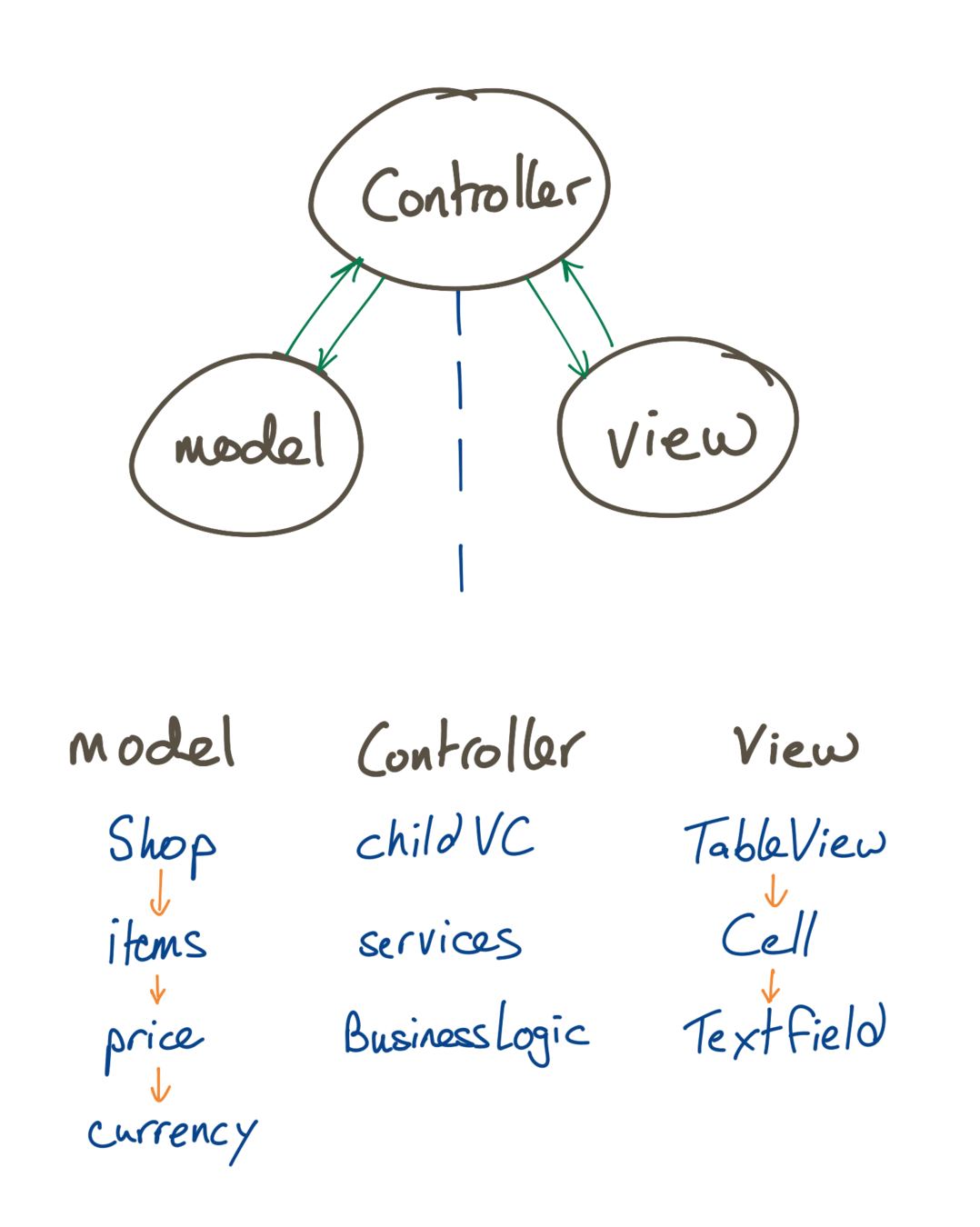Boundaries
... and how to define them
What are Boundaries?
🤔
A Macro Perspective
- We embrace OOP, so ...
- Everything is an Object
- An Object Boundary:
- public members (properties, methods)
- Side effects (delegate, callback, ...)
- A Function Boundary:
- Mutable reference type args
- Non-local variables (self)
- Our goal is always to Minimize it!
An Example
- MVC, a familiar face
- Network writes to Model
- Model notifies Controller
- Controller updates View
- User taps on View
- View notifies Controller
- Controller updates Model

Not Covered Today
- The object hierarchy
- Deciding on responsibilities
Why are they Important?
🧐
Well Defined Boundaries:
- Less code to worry about
- State/error containment
- Extremely easy to test
Achieving Good Boundaries
- Less globals
- Zero exposed state
- Good naming
Workshop
🛠
NetworkError
@objc public let error: NSError?
@objc public let serverErrorCode: String?
@objc public let serverErrorDesc: String?
@objc public let serverErrorFields: [String: Any]?
public enum Domain: Equatable {
case unknown
case connection
case url(String)
case backoff
case server(ErrorDTO)
}DispatchGroup
Problem
final class XYZ {
private var dispatchGroup: DispatchGroup? = nil
func doStuffThenProceed() {
dispatchGroup = DispatchGroup()
functionA()
if condition {
functionB()
}
...
dispatchGroup.notify {
self.proceed()
}
}
}DispatchGroup
Solution
final class XYZ {
private let operationQueue = OperationQueue()
func doStuffThenProceed() {
var operations: [Operation] = []
operations.append(functionA())
if condition {
operations.append(functionB())
}
...
let completion = {
self.proceed()
}
operations.forEach {
completion.addDependency($0)
operationQueue.add($0)
}
OperationQueue.main.add(completion)
}
}// before
private func loadMixpanelToggles() {
toggleDispatchGroup.enter()
togglesLoadedOrTimedOut = false
Mixpanel.mainInstance().joinExperiments {
if self.togglesLoadedOrTimedOut == false {
self.togglesLoadedOrTimedOut = true
self.toggleDispatchGroup.leave()
}
}
DispatchQueue.main.asyncAfter(deadline: .now() + ...) {
if self.togglesLoadedOrTimedOut == false {
self.togglesLoadedOrTimedOut = true
self.toggleDispatchGroup.leave()
}
}
}
// after
private func loadMixpanelToggles() -> Operation {
return BlockOperation {
let semaphore = DispatchSemaphore(value: 0)
Mixpanel.mainInstance().joinExperiments {
semaphore.signal()
}
semaphore.wait(timeout: .now() + ...)
}
}